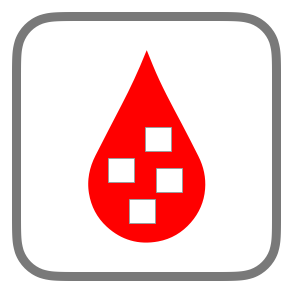Diabetes & Insulin Resistance
What is Diabetes?
Simply put, diabetes is a disorder of blood sugar and insulin. The reason that a person develops high blood sugar depends on what type of diabetes that a person has. However, all types of diabetes indicate that something has gone wrong with the way a person makes or uses insulin.
Type 1 diabetes
Type 1 diabetes results when, for autoimmune or other unknown reasons, the pancreas becomes damaged and fails to produce insulin.
Type 2 diabetes
In type 2 diabetes, the body usually does make insulin, but can’t use it effectively. Then the body has an increasingly hard time handling sugar in the blood.
What is Prediabetes?
Prediabetes is when your blood sugar levels are higher than normal (HbA1* level at or below 5.6%), but not high enough to be diagnosed as diabetes (HbA1 level at or above 6.5%).
Without lifestyle changes, adults and children with prediabetes are more likely to develop type 2 diabetes.
*HbA1c refers to glycated haemoglobin (A1c) , which identifies average plasma glucose concentration
Why Too Much Sugar in the Blood is a Problem?
Too much sugar in the blood is a problem because the sugar molecule in your blood, called glucose, damages blood vessels when there is too much of it. At the same time, other parts of the body can’t get energy from glucose because the glucose stays in the bloodstream and doesn’t enter other cells. Over time, this situation can harm the body in many ways and cause serious complications.
What is the Function of Insulin?
Insulin is a hormone made by the pancreas. Its primary job is to regulate blood sugar levels.
Regulate blood sugar levels
As you eat, your blood sugar level goes up. Insulin is released into the bloodstream to take that sugar (glucose) out of the blood and enter the body's cells to provide energy.
Store excess glucose for energy
After you eat — when insulin levels are high — excess glucose is stored in the liver in the form of glycogen. Between meals — when insulin levels are low — the liver releases glycogen into the bloodstream in the form of glucose. This keeps blood sugar levels within a narrow range.
stress stops the release of insulin
Hormones released in times of acute stress, such as adrenaline, stop the release of insulin, leading to higher blood glucose levels to help cope with the stressful event.
Too little / Too much insulin
Too little insulin is a life-threatening condition, but too much insulin, a hallmark of type 2 diabetes, is a problem too.
Too much insulin in the blood decreases the body’s ability to use insulin. This is called insulin resistance. Weight gain can be one of the first signs that the body is making too much insulin and is becoming insulin resistant. Diet and other lifestyle changes can help reverse insulin resistance and its associated weight gain, which may help prevent diabetes.
Source: Diet Doctor, Society for Endocrinology, Mayo Clinic
What is Insulin Resistance?
Insulin resistance is when cells in your muscles, fat, and liver don’t respond well to insulin and can’t easily take up glucose from your blood. As a result, your pancreas secretes more insulin to tell the cells that the level of glucose in the blood is too high, and that they need to take in more glucose. The cells cannot respond because they are full, so they resist letting glucose enter. The pancreas then goes into overdrive, secreting even more insulin in an attempt to overcome the cellular resistance and force the glucose into the cells.
>> More about insulin resistance (The Lock & Key Model)
Source: Diet Doctor, National Institute of Diabetes and Digestive and Kidney Diseases (NIDDK)





